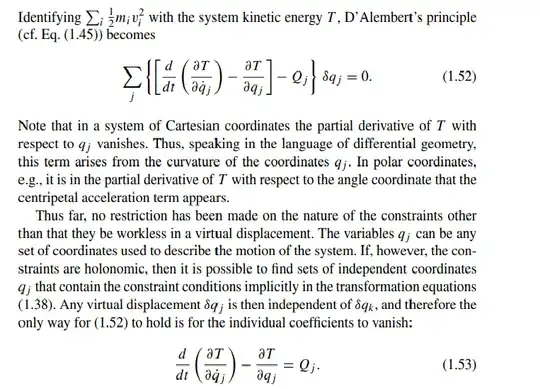I am confused by this remark in the derivation of Lagrange equations from d'Alembert's principle in Goldstein:
I am not comfortable that I understand why, at this late stage of the derivation, they are saying we can now freely choose to specialize to the case where the virtual displacements are independent, which implies the independence of the $δq_j$ has not already been firmly established.
I feel this result was already implicit in the derivation. Specifically, in order to derive eq. (1.51):
$$\frac{∂\textbf{v}_i}{∂\dot{q_j}} = \frac{∂\textbf{r}_i}{∂{q_j}}\tag{1.51}$$
we have to assume:
$$\frac{∂\dot{q_j}}{∂\dot{q_k}} = \delta_{jk}.$$
I think this already implies the $q_j$ and $δq_j$ must also be independent, and so this is already the only case where (1.52) is valid, rather than a special case as they suggest. What am I misunderstanding? Can the generalized velocities be independent even if the generalized coordinates and virtual displacements are not?
